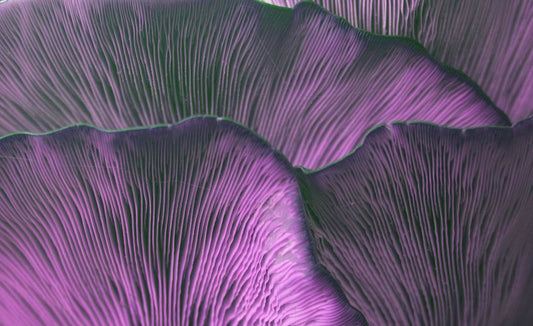Tyrian Purple

In the world of colors, few have captured the imagination and fascination of civilizations throughout history quite like Tyrian Purple. This regal hue, derived from the secretions of a humble sea snail, has a rich and storied past that spans centuries. From its early use in ancient civilizations to its mysterious production process and cultural significance, Tyrian purple is a color that resonates with both history and myth.
The Ancient Origins
Tyrian purple’s story begins in the eastern Mediterranean, where the Phoenicians, skilled seafarers and traders, first discovered the dye. The Murex snail, specifically Murex brandaris and Murex trunculus, was the source of this coveted pigment. Extracting the dye was a labor-intensive process, involving collecting vast quantities of snails, extracting the secretion and exposing it to sunlight to produce the vibrant purple color.
The rarity and complexity of the extraction process contributed to Tyrian purple’s exclusivity, making it a symbol of wealth and status. In ancient times, the dye was so precious that it was often referred to as “purple gold.” Its use was restricted to royalty, aristocrats and high-ranking officials, underscoring its significance as a symbol of power and prestige.
Symbolism and Royalty
Tyrian purple became synonymous with royalty in various ancient civilizations. In the Roman Empire, for example, the toga praetexta, a garment with a purple border, was reserved for high-ranking officials and magistrates. The emperors themselves wore robes dyed with Tyrian purple as a symbol of their supreme authority. The use of Tyrian purple in clothing and regalia wasn’t merely a fashion statement; it conveyed a message of status and authority that transcended linguistic and cultural barriers.
In Byzantium, the association between purple and royalty persisted. Emperors were often referred to as “Porphyrogenitos,” meaning “born in the purple,” as a nod to the purple-hued chambers where royal births took place. The color’s rarity and expense reinforced its connection to the highest echelons of society.
Tyrian Purple in Myth and Religion
Beyond its tangible presence in the material world, Tyrian purple also found its way into myths and religious symbolism. In ancient Greece, the myth of Hercules and the creation of Tyrian purple was born. According to the legend, Hercules’ dog discovered the Murex snail while fetching a ball along the shore. The snail’s secretions stained the dog’s mouth purple, leading to the discovery of the dye.
In a religious context, the color purple held special significance. In the Christian tradition, purple is associated with Lent and penance, reflecting the solemnity and introspection of the season. The use of Tyrian purple in religious vestments added a layer of sacredness and reverence to the color, tying it to spiritual reflection and devotion.
The Decline and Resurgence
As with many treasures of the ancient world, the popularity of Tyrian purple waned over time. The fall of the Roman Empire and the decline of Byzantium marked the end of an era where the color was a symbol of power. The knowledge of the secret dyeing process was lost, and the Murex snail’s populations were depleted due to overharvesting.
However, the allure of Tyrian purple never completely faded. In the modern era, there has been a resurgence of interest in this historic pigment. Archaeologists and historians have delved into ancient texts and artifacts to unravel the mysteries of its production. Additionally, the conservation of marine ecosystems has led to a renewed focus on sustainable practices for obtaining Tyrian purple.
Scientific Exploration
Modern science has shed light on the chemical processes behind Tyrian purple, uncovering the compounds responsible for its distinctive hue. The purple pigment is derived from dibromoindigo, a compound formed when the snail’s secretion reacts with sunlight and oxygen. This newfound understanding has paved the way for ethical and sustainable methods of producing Tyrian purple without harming the delicate balance of marine ecosystems.
Artistic Reverence
Tyrian purple’s legacy extends beyond the pages of history and the laboratories of scientists. Artists and designers today draw inspiration from this majestic color, incorporating it into their works to evoke a sense of luxury, sophistication and historical depth. The revival of interest in natural and traditional dyes has contributed to the resurgence of Tyrian purple in contemporary art and fashion.
The story of Tyrian purple is one of mystery, rarity and regality. From its ancient origins as a symbol of power and prestige to its decline and subsequent revival, this majestic hue continues to captivate and inspire. Its journey through history, myth and science highlights the enduring fascination that humanity has with color and the profound impact it can have on culture, symbolism and artistic expression. Tyrian purple stands as a testament to the timeless allure of the rare and the extraordinary in our shared human narrative.



